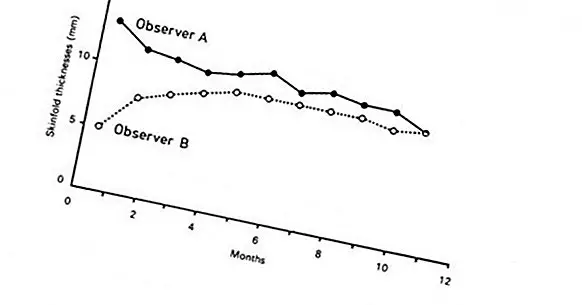Longitudinal studies: what they are and how they work in research
Longitudinal studies are a research method that consists of measuring a phenomenon through a specific time interval. In this sense, they serve to analyze and observe in a sequenced way the evolution of a phenomenon or its elements. They are frequently used in research related to health sciences, as well as in statistics, psychology, sociology and education.
In this article we will see that it is a longitudinal study , and what are some of its characteristics and main uses.
- Related article: "The 15 types of research (and features)"
What is a longitudinal study and what is it for?
The longitudinal studies are a research method , which as such, is a structured set of procedures that allows us to obtain information on a specific topic.
Specifically, the objective of longitudinal studies is to obtain information about a change process . They also serve to estimate incidents and anticipate risks. The above can occur through the observation and measurement of individual patterns and their stability or modifications over time.
In other words, they allow for estimates of the exchange rate as a function of time, and in relation to different characteristics of the individual such as age or other conditions (Arnau and Bono, 2008).
In this sense, longitudinal studies have traditionally been considered as research methods opposed to cross-sectional studies , which are based on momentary or fixed observations at a certain point of time, although they do not cease to be related to each other.
- You may be interested: "What is the scientific method and how does it work?"
Disciplines that use it and related studies
Longitudinal studies are especially used in health sciences, but they also allow measure the evolution of some phenomena also in psychology, in education, in sociology or in demography , to name a few.
In turn, the term "longitudinal study" may have some variations according to the specific discipline that employs it. For example, if these are studies carried out in the field of sociology, longitudinal studies are related to a type of studies called "panel study"; while when it comes to studies in the epidemiological and demographic field it is a subtype of the classic cohort study (those that measure the elements of a phenomenon between two or more time intervals).
In relation to the above, another type of cohort study is the life tables. The difference between a life table and a longitudinal study is that the first one makes a measurement considering only the beginning and the end of the interval (that is, the phenomenon is observed twice, once at the beginning and at the end, and the data from there). In contrast, in the longitudinal study measurements are made repeatedly (Delgado, M. and Llorca, J., 2004).
Likewise, when it comes to studies that are applied in the statistical field, they are also known to have been considered as a type of study of repeated measurements. They are so called because they are a type of study based on repetitive measurement, that is, it allows to observe a certain number of appearances of the phenomenon or of some of its characteristics in a specific time.
Types of longitudinal study
Depending on the specific field in which the longitudinal study is applied, it can be of different types. To illustrate, we will briefly describe its characteristics in epidemiology and statistics.
1. In epidemiology
The basis of the longitudinal study used in epidemiology is to know the disease experience of a population over time. Allow know the transitions between states of health and disease , and incorporate variables such as age or gender.
2. In statistics
It is a study that consists of make more than two measurements over time . That is, not alone and tries to measure a phenomenon at the beginning and another at the end, but to make repeated measurements of the phenomenon. In turn, this can be applied in different fields, for example in developmental psychology.
Design of this form of research
As with all research methods, longitudinal studies are applied according to the specific objective pursued by the research. The description of the studies and the elements that comprise it and that will allow it to be carried out, is what we know as research design.
The design of a study is important because makes it possible to ensure that the methodology corresponds to the objectives and will make it possible to arrive at results consistent with them. In this case, the longitudinal studies are used in investigations that have the objective of knowing a process of change through time.
Although the specific design depends on the type of longitudinal study that will be carried out, as well as on the specific field of application, in general terms, this type of research requires the following elements:
- Longitudinal data, which are the number of repetitions in which the phenomenon will be observed .
- Observed elements can be units, individuals, subjects, groups, populations.
- Time points, which are the time intervals in which the element is recorded, can range from a few minutes to several years.
- Response profile , also called trend or curve, which is the response set of the measured unit.
Limitations
Both in longitudinal studies and in other studies based on repetitive measures, there are two fundamental implications. The first is that there is a dependence between the number of times the phenomenon is repeated and the unit observed . That is, the number of repetitions is the main criterion for explaining the phenomenon under study.
The second is that the circumstances or variable under which the phenomenon can recur, often they leave the control of the person who investigates , with which, the data can often be incomplete.
Bibliographic references:
- Arnau, J. and Bono, R. (2008). Longitudinal studies of repeated measures. Design and analysis models. Psychology Writings, 2 (1): 32-41.
- Delgado, M. and Llorca, J. (2004). Longitudinal studies: concept and particularities. Spanish Journal of Public Health, 78: 141-148.




















